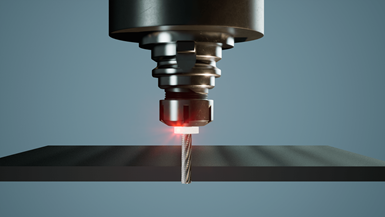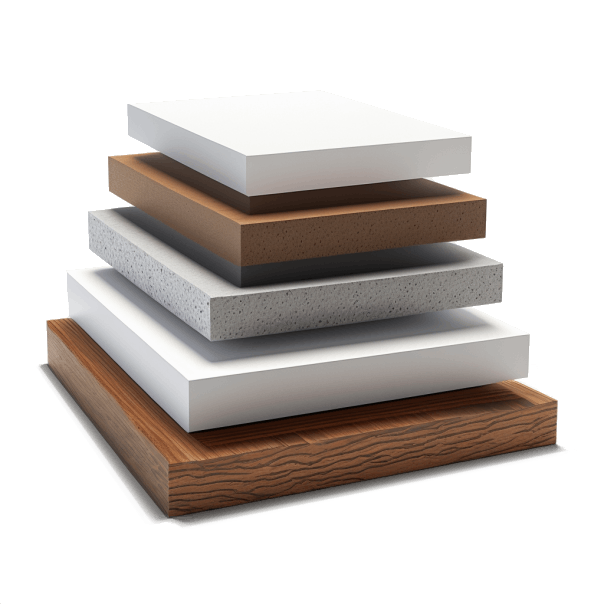CW Selects Top 10 Composite Materials Products of 2023
 Jan 17, 2024|
Jan 17, 2024| View:215
View:215The composite materials industry has witnessed numerous innovations and product developments in the past year, signaling significant progress in the sector's advancement. This compilation serves as a valuable resource, providing insights into the latest trends and breakthrough solutions that have garnered attention and acclaim in the field of composite materials. Based on Google Analyticsdata, CW has compiled the top ten products with the highest page views.
10. Toray Industries Unveils Torayca T1200 Carbon Fiber
On October 30th, Toray Industries, Inc. of Japan announced the development of the TORAYCA™ T1200 carbon fiber, touted as the world's strongest carbon fiber. Developed at Toray's new facility in Mihara, Ehime Prefecture, this innovation caters to a wide range of applications, from sports and leisure to aerospace.
The strength of carbon fiber is significantly influenced by internal defects, primarily determined by production processes such as fiber matrix, preoxidation, carbonization, and post-processing. Toray addressed this challenge by leveraging its proprietary nanoscale structural control technology, resulting in the design and realization of a high-toughness internal structure for carbon fiber. The company introduced the TORAYCA™ T1200 as a product of this technology.
9. TemperChip Machining Temperature Sensors for Composite Materials
When using cutting tools, users can only estimate tool life roughly. Tool suppliers may provide tool life data, but due to the diverse applications of cutting tools, this data is often generic and inaccurate.

The TemperChip noncontact temperature machining sensor. Photo Credit, all images: TemperChip
TemperChip is a non-contact temperature processing data measurement device installed on cutting tools or machine tool supports. Developed by Yaakov Manas and Eli Yudkevich, this device serves as a solution for composite material processing, enabling continuous control of evolving temperature measurements. TemperChip unlocks the potential to monitor various working parameters between machines and workpiece materials, providing a tool for monitoring tool life and efficiency.
8. GEHR Introduces Biodegradable and Recyclable Wood 3D Printing Filament
Global thermoplastic semi-finished product manufacturer GEHR launched Eco-Fil-A-Gehr, a new wood filament designed specifically for professional 3D printing. It boasts high dimensional stability, optimal elastic characteristics, and biodegradability and recyclability.
Photo Credit:GEHR
Eco-Fil-A-Gehr Wood, produced by Sulapac in Helsinki, Finland, blends recycled wood fibers with biodegradable biopolymers. Premium ecological filaments lend a natural look, feel, and tactile sensation to printed objects. It can be used to print robust and stable parts as well as lightweight, highly detailed objects.
7. Spur Introduces Hardex Structural Foam Core as Lightweight Core Alternative in Sandwich Composite Materials
Czech Republic-based polymer and plastics processing company Spur launched Hardex XPP closed-cell foam material as an alternative to other closed-cell cores in composite sandwich structures. Hardex XPP is entirely recyclable and contains a significant amount of recyclable components. It offers strong moisture resistance, chemical resistance, impact toughness, and thermal insulation. Additional features such as enhanced UV resistance and improved fire resistance can be added as per requirements.

Photo Credit: Hardex
Spur states that its material can be cut and processed similarly to wood, allowing the use of screws, nails, and glue for connections. It can also be joined using methods like fusion welding, hot air welding, or ultrasonic welding to eliminate adhesives. Functional and aesthetically pleasing surfaces can also be connected in a similar manner. Hardex XPP has a maximum usage temperature of 150°C and is thermoformable. It can undergo heat lamination with polypropylene (PP) composite material skins to create a single-material panel without the need for glue or adhesives, facilitating easy recycling. The production speed of such panels is typically 2-10 times faster than similar panels bonded with more traditional reactive adhesives. Examples of polypropylene (PP) composite panels include glass fiber/polypropylene (PP) used by automotive companies to manufacture lightweight, low-cost composite body panels.
6. SmartValves Improve Traditional Vacuum Bag Ports
Developed by Bert Groenewoud, a composite materials technician, lecturer, and process development engineer with over forty years of experience in composite manufacturing and repair, SmartValves addresses challenges encountered during the vacuum bagging process for complex aircraft structures.

SmartValves are shown at far left and far right, with traditional two-piece vacuum ports in between. Photo Credit: SmartValves, Bert Groenewoud, Earth and Flight Composites.
Standard vacuum ports use a base plate beneath the vacuum bag. To connect the top components (with vacuum hose fittings), a hole is cut in the vacuum bag above the center of the base plate, and the top component is twisted to tighten. SmartValves design eliminates tilting issues by using a flat stainless steel base with internal channels leading directly to the connect/disconnect fittings, eliminating pressure points. During installation, the valve plate is placed on the edge of a flat or curved area, covered with a breathable layer, and the vacuum bag film is covered with sealing tape. Downward pressure seals the valve plate on both sides and the top. Smart valves remain upright without the need for vacuum application to prevent tilting, a common issue with standard valves. Even with connected vacuum gauges and heavy hoses, smart valves maintain an upright position. Additionally, there is no need to cut the bag, reducing the risk of razor or scissor presence if using pre-cut bag film.
5. Envalior Provides New Tepex Composite Material for Electric Vehicle Battery Housing
Envalior, a joint venture between DSM Engineering Materials (DEM) and Lanxess High-Performance Materials (HPM), introduced a new composite material under the Tepex brand capable of passing standard thermal runaway tests for electric vehicle (EV) battery housings, even at lower sample thicknesses. The material's resistance to battery cell ignition under extreme conditions is attributed to its long, continuous, non-combustible fibers that reinforce the material in a multilayer structure.
Thanks to the fibers, the structural material can withstand extreme pressures, temperatures well beyond 1000°C, and impacts from abrasive hot particles during battery cell thermal runaway. Another advantage of the material is its significantly lower weight compared to steel or aluminum. Tepex composite material also has a variant containing recycled carbon fibers, constituting approximately 36% by weight.
4. Hexcel Launches New RTM Resin and Rapid Cure Prepregs for Aerospace
To meet OEM demands for increased production efficiency, Hexcel introduced two new aerospace material products, each offering shorter curing cycles for higher production speeds.
HexPly M51 is a rapid-cure prepreg designed for out-of-autoclave pressure curing. Compatible with automated tape laying (ATL), automated fiber placement (AFP), and pick-and-place processes, HexPly M51 complies with REACH standards, with a cure cycle of 40 minutes at 180˚C. As part of the ASCEND project, this prepreg was used in collaboration with GKN Aerospace to manufacture rib components.
Hexcel HiFlow HF610F-2 resin is a new resin transfer molding (RTM) resin suitable for high-speed manufacturing of small to medium-sized parts, enabling robust high-speed injection processes. Airbus Stade used HiMax non-crimp fabric and HiTape unidirectional reinforcements combined with the new liquid resin for components in the Wing of Tomorrow (WOT) project, achieving a total molding time of only 30 minutes.
3. SABIC Introduces Fiber-Reinforced, Expandable, Flame-Retardant Resins
Saudi Basic Industries Corporation (SABIC) has unveiled polypropylene compounds H1090 and Stamax 30YH611 resins, both well-suited for sheet extrusion and thermoforming applications. The company asserts that these materials can substitute traditional sheet molding, compression molding, and injection molding, enabling customers to shape large, intricate structural components.
SABIC's short glass fiber-reinforced polypropylene compound H1090 resin and long glass fiber-reinforced Stamax 30YH611 resin boast unique features, combining flame-retardant expandability with balanced stiffness and flexibility. Exposing these materials to vertical and horizontal flames at 1200°C for 10 minutes demonstrates optimal flame-retardant performance. Effective charring and expansion keep the reverse side of the components below 210°C, aiding in preventing burn-through. The 1.5mm thickness with bromine-free/chlorine-free flame retardant meets UL94 V0 standards, enhancing expandability.
2. Teijin Automotive Innovates Core Technology for Car Body Panels
Teijin Automotive Technology, based in Auburn Hills, Michigan, has introduced two key products in its innovative series of automotive composite materials. One of them is Hexacore, a honeycomb core designed specifically for Teijin Automotive's high-speed compression molding process. It is used in the manufacturing of lightweight, Class-A body panels, roof panels, closures, and various automotive components, meeting current and future industry requirements.
Hexacore material is compatible with a range of fibers and resins, including carbon fiber or glass fiber, aramid fiber or natural fiber; thermoplastic resins, including acrylonitrile butadiene styrene (ABS), polymethyl methacrylate (PMMA), or polycarbonate (PC); or low-density sheet molding compound (SMC). It can also be used in other processes, such as resin transfer molding (RTM), as well as various coatings, veils, and films. Reportedly, using Hexacore material can reduce weight by 25% compared to similar two-piece SMC components.
1. Graphene-Enhanced SMC Improves Component Performance
NanoXplore Inc., one of Canada's largest graphene nanomaterial producers, has developed a graphene-enhanced sheet molding compound (SMC) marketed under the trade name GrapheneBlack SMC.
Compared to traditional SMC with the same density, this product can reduce weight by up to 15%, allowing original equipment manufacturers to lower costs by thinning and, consequently, reducing the material required for each part. Additional advantages include increased strength (up to 26% improvement in tensile, compression, and torsional strength) and stiffness (better resistance to vibration loads), providing an opportunity to decrease nominal wall thickness.
GrapheneBlack SMC enhances the moisture resistance of SMC molded parts, reducing surface bubbling after painting and lowering quality defects. Furthermore, graphene improves sound damping, UV stability, chemical resistance, surface smoothness, and paintability. The graphene-enhanced solution reduces stress-cracking resistance and achieves process improvements through better in-mold flow and curing, higher flame resistance, and thermal conductivity. (Source: CW)












